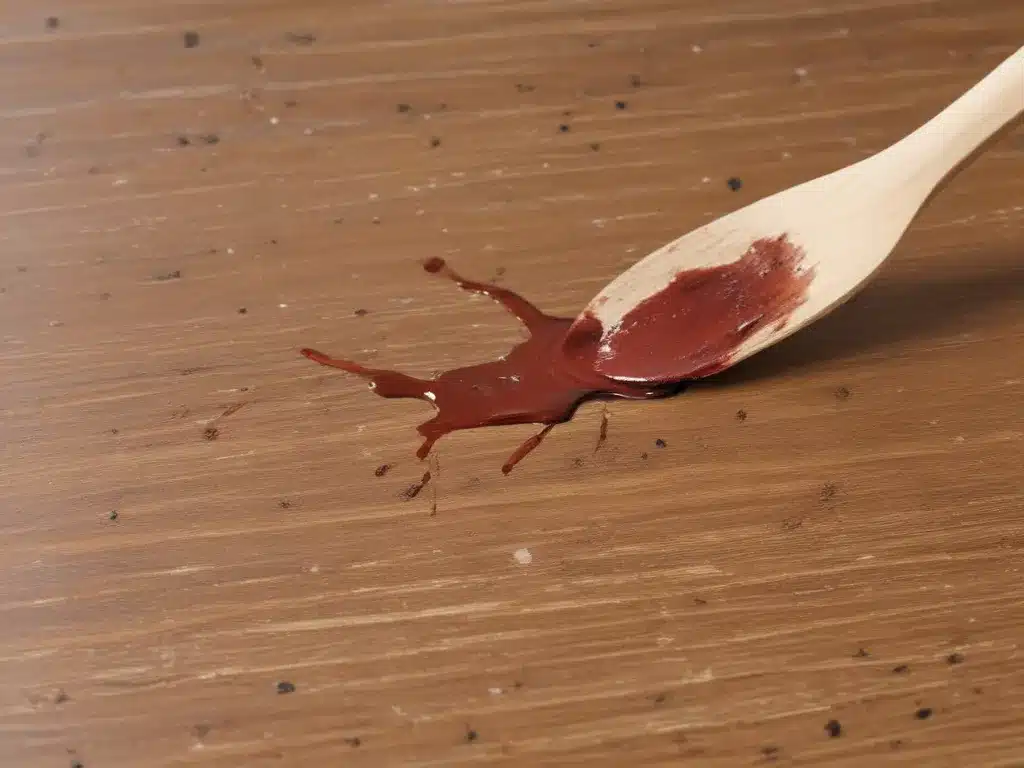Introduction
In today’s world, where environmental concerns are at the forefront, finding eco-friendly solutions for everyday tasks has become increasingly important. When it comes to removing stubborn stains, many traditional cleaning products contain harsh chemicals that can be harmful to both your health and the environment. However, there are numerous natural alternatives that can effectively tackle stains without compromising your commitment to sustainability.
Section 1: Common Eco-friendly Stain Removers
Baking Soda
Baking soda – is a gentle abrasive that can effectively remove a variety of stains. The baking soda absorbs odors and lifts stains from fabrics, carpets, and other surfaces. To use baking soda as a stain remover, I simply make a paste by mixing it with water and apply it directly to the stain. After letting it sit for a few minutes, I scrub the area gently and then rinse with clean water.
Vinegar
Vinegar – is a versatile and inexpensive household item that can be used as a natural stain remover. Its acidic nature helps to break down and dissolve many types of stains, including grease, oil, and food spills. To use vinegar as a stain remover, I mix equal parts of white vinegar and water in a spray bottle and apply it directly to the stained area. After allowing it to sit for a few minutes, I blot the stain with a clean cloth or sponge.
Lemon Juice
Lemon juice – is another natural stain remover that can be highly effective. The citric acid in lemon juice acts as a bleaching agent, helping to lift and remove stubborn stains. To use lemon juice as a stain remover, I simply apply it directly to the stained area and allow it to sit for several minutes before blotting it with a clean cloth or sponge.
Section 2: Tackling Specific Stains with Eco-friendly Solutions
Grass Stains
To remove grass stains from clothing or other fabrics, I create a paste by mixing equal parts of baking soda and water. I apply this paste to the stained area and let it sit for several minutes before scrubbing gently with a clean brush or sponge. This solution can also be effective for removing mud stains.
Coffee and Tea Stains
For coffee and tea stains, I often turn to white vinegar as my go-to solution. I mix equal parts of white vinegar and water in a spray bottle and apply it directly to the stained area. After allowing it to sit for a few minutes, I blot the stain with a clean cloth or sponge.
Red Wine Stains
Red wine stains can be notoriously difficult to remove, but salt and club soda can be an effective eco-friendly solution. I first pour a generous amount of club soda onto the stain and then sprinkle salt over the top. The salt acts as an abrasive while the club soda helps to break down the wine’s pigments. After letting the solution sit for a few minutes, I blot the area with a clean cloth or sponge.
Section 3: Eco-friendly Stain Removal Tips and Tricks
Act Quickly
One of the most important tips for effective stain removal is to act quickly. The longer a stain sits, the more difficult it becomes to remove. As soon as a spill or stain occurs, I immediately address it with one of the eco-friendly solutions mentioned above.
Pretreat Stains
Before washing stained clothing or fabrics, I pretreat the stained areas with a eco-friendly stain remover solution. This helps to break down the stain and increase the chances of successful removal during the washing process.
Use Cold Water
When dealing with fresh stains, I always use cold water instead of hot water. Hot water can set the stain, making it more difficult to remove. Cold water helps to prevent the stain from setting and makes it easier to lift and remove.
Avoid Harsh Scrubbing
While it’s important to gently scrub stained areas to lift and remove the stain, harsh scrubbing can actually damage the fibers of fabrics and surfaces. I use a soft-bristled brush or sponge and gentle circular motions to avoid damaging the material.
Section 4: Preventing Stains with Eco-friendly Practices
Use Eco-friendly Fabrics
Certain fabrics are more prone to staining than others. By choosing eco-friendly fabrics like organic cotton, linen, or bamboo, I can reduce the likelihood of stubborn stains and make them easier to remove when they do occur.
Protect Surfaces
To prevent stains on surfaces like countertops, tables, and floors, I use eco-friendly protective coatings or sealants. These products help to create a barrier that repels spills and stains, making them easier to wipe away before they have a chance to set.
Regular Cleaning and Maintenance
Regular cleaning and maintenance can also help to prevent stains from setting in and becoming more difficult to remove. By following a consistent cleaning routine and addressing spills and stains as soon as they occur, I can minimize the need for harsh cleaning products and keep my living spaces looking fresh and clean.
Conclusion
Embracing eco-friendly stain solutions not only protects the environment but also promotes a healthier living space for you and your family. By utilizing natural ingredients like baking soda, vinegar, and lemon juice, and following the tips and tricks outlined in this article, you can effectively remove stubborn stains without relying on harsh chemicals. Remember, taking a proactive approach to stain prevention and acting quickly when spills occur can make a significant difference in maintaining a clean and sustainable home.







